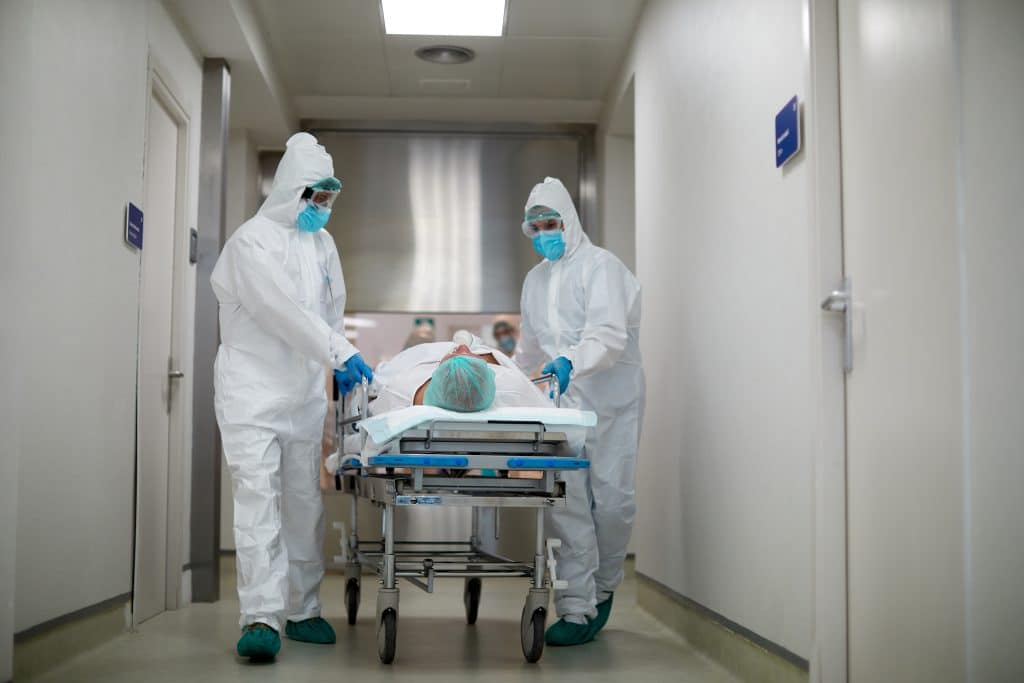Swing Suites: Expanding Critical Care Capacity
The Coronavirus pandemic has tested hospitals like never before, revealing a lack of properly equipped patient care areas to handle a massive increase in patient population.
While new hospitals are building “pandemic-safe” units fully equipped for negative-pressure isolation, the vast majority of healthcare facilities lack the space and financial resources necessary to accommodate a surge in patients.
The Swing Suite is a relatively inexpensive strategy of repurposing existing spaces. The concept may be appealing to healthcare providers given that it does not require relicensing of beds or adding more square footage. Implementation can be quickly instituted when a renovation or expansion of existing infrastructure is already underway.
The Swing Suite does not require relicensing of beds or adding more square footage.
Intensive Care Capacity Varies by Region
After years of hospital expansions, the United States today leads the world in acute care spending and per-capita intensive care capacity. Despite the progress, many hospitals continue to lack adequate intensive care unit (ICU) patent beds, isolation rooms or ventilation systems.
The number of critical care beds have multiplied from fewer than 70,000 in 1985 to nearly 98,000 today. Still, the American Hospital Association estimates that, prior to the pandemic, less than half were capable of negative-pressure isolation, confining pathogens within the unit.


Significant disparities in ICU capacity are found across the country. In states such as Nevada and Washington, more than 11 percent of hospital beds are certified for critical care. In Iowa, Montana and South Dakota, intensive-care beds account for less than 5 percent of total beds.
The pandemic has revealed these disparities as a large number of healthcare systems must embrace previously unimaginable solutions. Hospitals are repurposing existing and new spaces — from vulnerable environments such as field hospitals to expensive short-term fixes, such as the conversion of convention centers, sports stadiums and naval vessels.

Source: Society of Critical Care Medicine
Cost-Effective Approach to Expand Capacity
A new concept, known as a “Swing Suite,” may offer an alternative solution.
The Swing Suite concept suggests that a patient care room or suite licensed for a particular occupancy may be quickly transformed (or swung) to handle more critical patients.
For example, the space or suite may be licensed for general care patients but contain additional mechanical, electrical and plumbing (MEP) infrastructure. This would allow the space to be swung to accept patients with acute care needs during a pandemic or mass-casualty scenario.
Key to implementing the Swing Suite concept is a well-thought-out and properly designed disaster preparedness plan. Once a comprehensive plan is established and the required infrastructure is installed, an area can be swung during emergencies in minutes, adding numerous critical care beds for hospital use.
Swing Suites Offer Customized Design Solutions
The Swing Suite concept involves outfitting a room, wing or entire floor with additional critical power, medical-grade gas supplies, and dedicated heating, ventilation and air conditioning (HVAC). Each Suite also includes High-Efficiency Particulate Air (HEPA) filtration and a dedicated exhaust system, as well as controls for limiting pathogen exposure and providing negative air pressure when required.

The Swing Suite may be quickly transformed (or swung) to handle more critical patients.
The room or suite should have an anteroom, protecting the adjacent spaces from the inadvertent transfer of pathogens. When a permanent anteroom is not feasible, facilities may look to utilize Underwriters Laboratory (UL) listed portable anterooms. These self-contained mobile units are magnetically attached to the metal jambs that surround hospital doorways, sized to suite specific needs. Such anterooms can be deployed within minutes.
Steel-encased potable anterooms are provided with negative air machines and equipped with ultra-violet light technology, zapping deadly pathogens from bodies and clothing. The anterooms allow staff to change their Personal Protective Equipment (PPE) while minimizing the spread of infectious particulates. Filtration and UV technology together reduce the pathogen cells to safe, single-digit micron level.
Prepare Facilities for Future Emergencies
Heroic efforts to transform critical-care services during the coronavirus pandemic have unfortunately revealed how hospitals are not well designed for sudden surges in new patients requiring acute care.
Deciding how to manage ICU capacity carries high stakes. Seamless and cost-effective solutions are needed in order to add acute care capacity, without sacrificing patient care. All this must be achieved while keeping healthcare workers — the doctors, nurses and other staff on the front lines of this and future catastrophes — healthy and safe.
Facilities should work with an experienced engineering firm when planning to implement a Swing Suite concept. If successfully deployed, the Swing Suite concept would allow for hospitals to more proactively and soundly prepare for future outbreaks, disasters or other high-casualty events.


